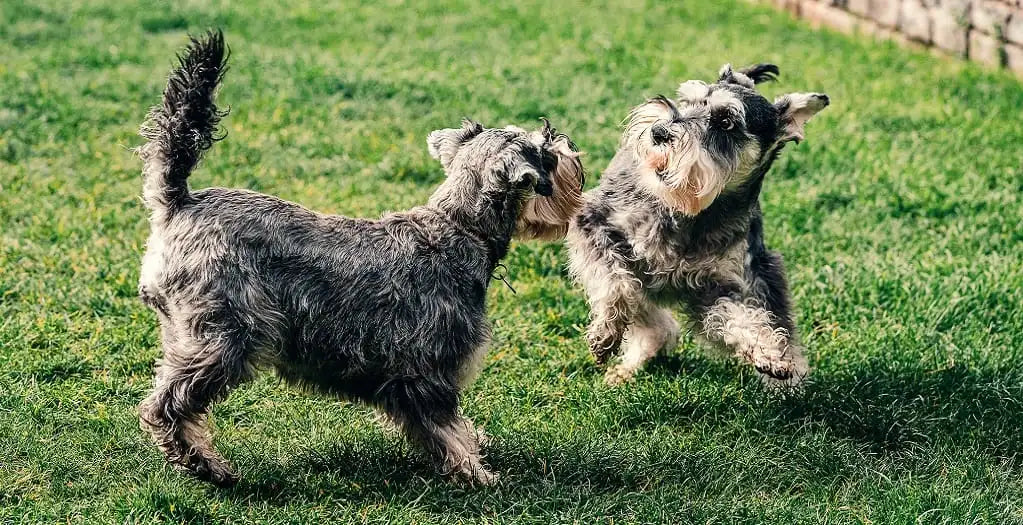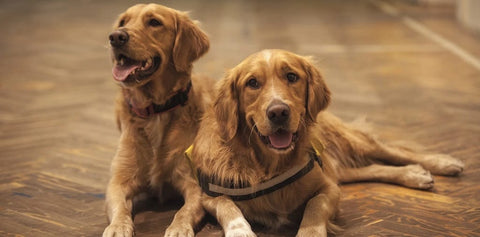

How to keep your dog’s coat shiny and healthy
If you are a dog owner, then you will know just how much dogs love a good pat or tummy rub! But what if you notice their coat isn’t as soft as it used to be or that skin is looking a little dry? Although dog’s coats can change with age, it is good to understand what kind of coat your dog has, so as they mature you know what to expect. It also means that when something unexpectedly changes and their coat doesn’t seem as shiny and healthy as usual, you are able to help your four-legged friend.

Types of Dog Coats
Long Coat
Dogs with long coats tend to require quite a lot of maintenance, such as needing to be brushed at least three times a week. Long coats tend to vary in texture and length depending on the breed but if left unattended, the build-up or knots and matting can be painful for the dog. Because of this owners of long-coated breeds who do not use them as show dogs tend to keep their coats cut shorter.
Curly Coat
Curly coats, which may also be referred to as woolly coats, are very thick, voluminous and curly. This means that they require frequent grooming, but as styles vary from tight curls to loose waves, the frequency of grooming may vary depending on the individual dog and the condition of their coat. Woolly coats have a tendency to become matted and they grow very quickly so if you own a curly-coated breed you will need to make sure that you keep on top of your pet’s grooming.
Short Coat
Short-haired coats are built up of two layers of coats that lay close to the body in order to protect your dog from the elements. Your dogs short coat will be full of texture as you run your fingers through it and although shorter coats may not require a lot of grooming they are more likely to hold water. So be sure to dry your dog’s coat thoroughly after bathing and going on raining walks, to avoid a wet dog smell! We recommend investing in a micro-fibre towelling robe to help the drying process!
Wire Coat
Wirey-coated dogs feel much different from the smooth pooches we’re used to. Wire coats are exactly that, wirey! Breeds with this type of coat may need frequent grooming as they are likely to tangle or become matted. Wire coat dogs should be stripped or clipped, the latter removes the harder coat so the rest of the coat has a chance to grow out whereas stripping removes old and faded hairs.
Combination Coat
Dogs with combination coats have areas with different types of fur. Typically these are easy to tell apart where the sections of hair are longer. In this instance, grooming should be planned around the longer areas of hair.

So no matter what breed or coat type your dog is we’ve compiled the best ways to keep your dog’s coat as healthy and shiny as possible...
Keeping Your Dog's Coat Shiny and Healthy
Nutrition is key
Have you noticed that your dog’s coat is dull? Similar to human hair, a dog’s coat is made up of around 90% protein. So if their coat isn’t as shiny as it used to be, then this could be due to their nutrition
When purchasing dog food, take a look at the protein source. You want to purchase a product with a meat source as the main ingredient, such as chicken or lamb. Once your dog’s diet begins to balance out that shiny mane should back to its original glossy self.
If their coat is still lacking lustre after adding more protein to their diet, then it could be that your dog is missing some of their key nutrients. For skin and fur health, your dog needs Omega-6 and Omega-3 fatty acids, which are great anti-inflammatories! Omega-3 is one of the key ingredients in our Skin & Coat Care supplements, a range which depending on the product can reduce itchy and dry skin, aid in reducing moulting, or boost the vital nutrients needed for hair growth and skin health. Another tip for a little added shine is that you can also give you pet coconut oil as a treat, just a teaspoon a day in their food or moisturised into their skin will bring extra shine to their coat.
Consistent Grooming
Grooming will depend on your dog’s breed, coat type and condition. Regular brushing is key to keeping their coat shiny, as it stimulates skin and hair follicles. Whilst brushing also helps circulation and removes dead cells, getting your pooch into this routine will also allow you to check their coat and skin for anything unusual, such as ticks and fleas without unnerving them.
It’s Bath Time - Shampoo and Bathing
How often you bathe your dog is also dependent on your dog’s breed, fur and skin type. The type of shampoo you use may also factor in how often you should bathe your pup. Similar to human hair, the shampoo needed for dog hair depends on their skin type, coat type, age and how dirty they are. This is key because whilst bathing your dog you need to be making sure you are replenishing natural oils that they could be lost in the process. Why not check out the Pet Head dog shampoo range, selecting the right shampoo for your dogs needs. But this does not mean you should be bathing them too frequently, stick to the washing schedule for your dog’s breed so you don’t strip their natural oils and dry out their skin - resulting in a clean pup with a shiny and healthy coat.



